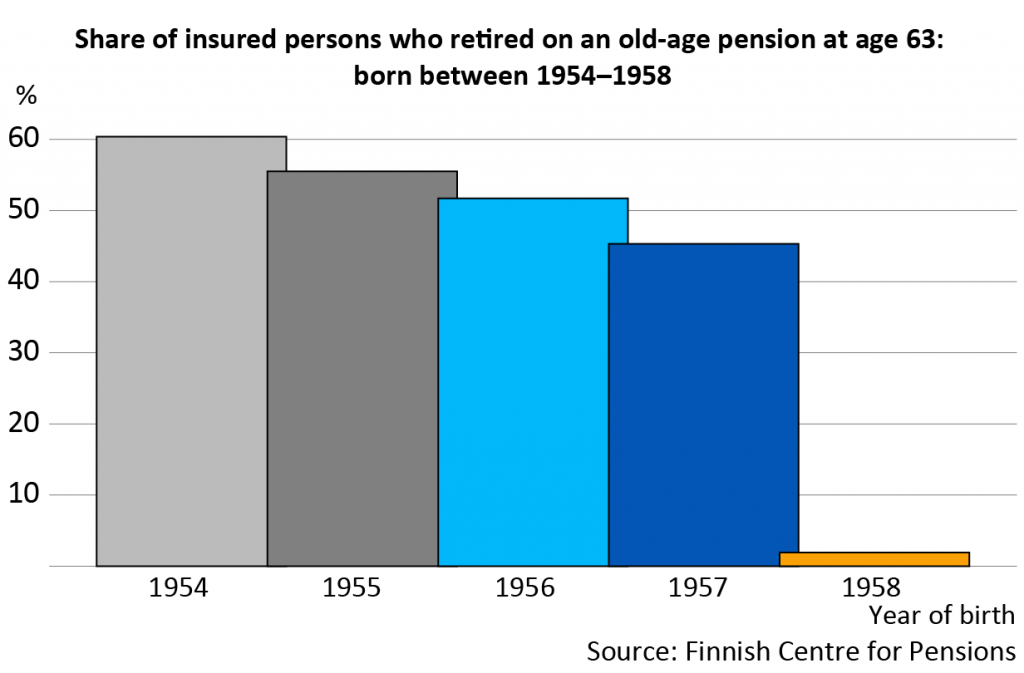64 years – typical age to retire

Last year, nearly 71,500 persons retired on an earnings-related pension. Nearly 54,000 of them retired on an old-age pension. The largest birth cohort retiring on an old-age pension were the 64-year-olds, reveals fresh statistics of the Finnish Centre for Pensions.
In recent years, retirement has been deferred in line with the rising retirement age.
Those born in 1954 were the last birth cohort with a retirement age of 63 years. 60 per cent of those born that year retired on an old-age pension at age 63, that is, within one year from reaching their retirement age. After that, the share of persons retiring at age 63 of all persons insured for an earnings-related pension decreased by around five percentage points per birth cohort. In 2022, the share was zero.
“Of the insured persons born in 1958, only a few per cent retired at age 63 since only a few special groups of that birth cohort had the right to retire before the cohort’s retirement age of 64 years. As soon as the people of this birth cohort turned 63 in 2022, more than 20,000 of them retired on an old-age pension. This was roughly the same amount as for previous birth cohorts when they reached the retirement age”, says Development Manager Jari Kannisto (Finnish Centre for Pensions).

The share of old-age pensioners aged 63 has decreased at nearly the same pace for men and women.
Working after age 63 increased significantly
Raising the retirement age extends working lives as most insured continue to work until their new retirement age.
“Of the insured born in 1954, up to 60 per cent stopped working within one year of reaching their retirement age of 63. Of those born in 1958, however, only 7 per cent stopped working within one year of turning 63. This is a significant change”, Kannisto explains.
The change is also reflected in the employment rate of the older population. It rose considerably in the 2010s for the 60–65-year-olds. The employment rate of the 60–62-year-olds rose evenly throughout the decade while the increase for the 63-year-olds occurred particlularly after the 2017 pension reform.
Number of disability pensioners has grown
Although the 2017 pension reform has extended working towards the end of working life, this is not the case for all older persons. Retirement on a disability pension has increased among those who are close to their retirement age. In 2022, slightly less than 5,000 persons aged 61–63 retired on a disability pension. The number has nearly doubled compared to the time before the 2017 pension reform.
“When the ability to work was put to the test before, some managed to continue working until retirement at age 63. Now that the retirement age is higher, some may feel that it is impossible to reach”, Kannisto assesses.
Read more
